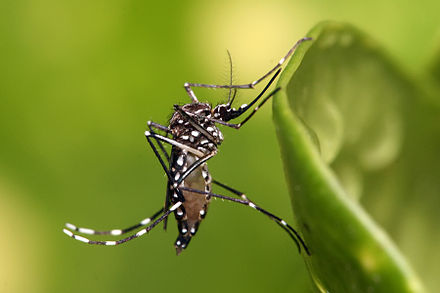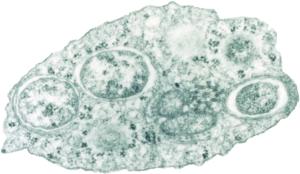
Facilitated by increasing global mobility, urbanisation, climate change, and the development of insecticide resistance, populations of the yellow fever mosquito, Aedes aegypti, are increasing in range and size. This spread includes their recent re-emergence in parts of Europe after their disappearance in the mid-20th century and is of particular concern due to their role as the transmitters of viral diseases such as yellow fever, dengue, chikungunya and Zika.

A successful eradication programme was conducted in Brazil in the 1940s and 50s; however, within 30 years A. aegypti populations were re-established. Since then, the country has been badly affected by outbreaks of dengue and chikungunga, last year’s Zika infections and currently the worse outbreak of yellow fever in decades.
Control strategies
Mosquito control strategies that avoid the use of insecticides are already being used but alternative approaches, aimed at creating mosquitoes that cannot transmit these diseases, are also being deployed. These include facilitating the spread of an endosymbiotic bacterium, Wolbachia pipientis, throughout natural populations of A. aegypti. The advantage of this bacterial infection is that it inhibits the replication of the viruses that cause dengue, chikungunya and Zika, thus reducing the ability of the mosquito to transmit these diseases.
Wolbachia
Wolbachia is a genus of bacterium that infects arthropods, including many insect species.
They invade many organs including the ovaries and testes of their hosts and are passed on to the next generation in the eggs. In many cases sperm from Wolbachia-infected males cannot successfully fertilise eggs from uninfected females (a process known as cytoplasmic incompatibility) and so the offspring of infected females (which are themselves infected) begin to dominate a population.
Headed by Scott O’Neill, the Eliminate Dengue programme is introducing Wolbachia-carrying mosquitoes into natural population of Aedes aegypti in several countries, including Brazil. Some of his earlier work was described in my BugBitten blog in 2014.
Despite the success of this strategy, Wolbachia infections have been shown to place an increased metabolic burden and could cause fitness costs that would render their hosts less competitive than uninfected mosquitoes.

Wolbachia and potential fitness costs
In view of this potential metabolic burden, a team from Brazil has questioned the effect of the wMel strain of Wolbachia on important aspects of physiology that impact on mosquito fitness and thereby the ability of these infected mosquitoes to compete with uninfected ones. Members of the group had already established two mosquito populations, one infected with the wMel strain and the other an uninfected population created by treating their infected strain with tetracycline as this removes all the Wolbachia. They chose to compare several parameters concerned with blood meal processing, egg production and longevity.
Their recently published findings demonstrate that there is no difference in the mean size of mosquitoes from the two populations. In addition, they imbibed the same amount of blood when feeding and their survival rates were the same. However, infection with wMel did give rise to several physiological differences between the two mosquito strains.
Blood meal processing
Trypsin is a key enzyme involved in the digestion of blood meals in mosquitoes. Comparison of trypsin activity levels in the midgut of mosquitoes from each group demonstrated that the bacterial endosymbiont had no significant effect, suggesting similar amounts of amino acids would be available for egg production. It did, however, take longer for mosquitoes infected with wMel to excrete the remains of their bloodmeal and less was excreted by infected mosquitoes than uninfected ones. This indicates some difference in bloodmeal processing such as greater metabolism of the bloodmeal or differences in waste metabolism. Another possible explanation is that the presence of wMel Wolbachia changes the gut microbiota and thereby affects digestion. The authors suggest these hypotheses should be investigated further.
Egg production
The wMel mosquitoes began laying eggs later than the uninfected ones and the bulk of their eggs were laid later. Egg development in mosquitoes involves the synthesis of yolk protein precursors in the fat body and uptake by the developing eggs, a process known as vitellogenesis. One explanation for the delay in egg laying may be found in the reduced expression of genes associated with the production of three yolk protein precursor genes measured in this study. Yolk protein may thus have been deposited at a slower rate in wMel mosquitoes.
Vitellogenesis is controlled by many factors including the TOR pathway and the insulin-like signalling pathway. Investigation of the expression of a key gene involved in the former found no differences between infected and uninfected mosquitoes. In contrast, expression levels of the gene responsible for production of Insulin-like-Peptide 3 precursor were significantly elevated, despite the reduction in expression of yolk protein precursor genes and the lack of an increase in trypsin activity, both of which it stimulates. There is clearly more work to be done to unravel the changes in vitellogenesis that occur when wMel Wolbachia infection is present.
Field studies are needed
The authors of this paper acknowledge that, although the presence of this bacterial endosymbiont in their laboratory colony could affect mosquito fitness, the effect was low compared to reports of mosquitoes transfected with other strains of Wolbachia. They suggest a greater effect might be detected in the field, where mosquitoes are likely to take multiple small bloodmeals and other stressors would come into play.
This Brazilian population of wMel A. aegypti is regularly backcrossed with wild, locally collected, mosquitoes. Despite any concerns regarding the colony’s fitness it should be noted that the original wMel mosquitoes successfully invaded two natural populations of A. aegypti in Australia and reached near-fixation within a few months. It would appear that, in these cases, relatively small fitness costs were incurred.

Comments